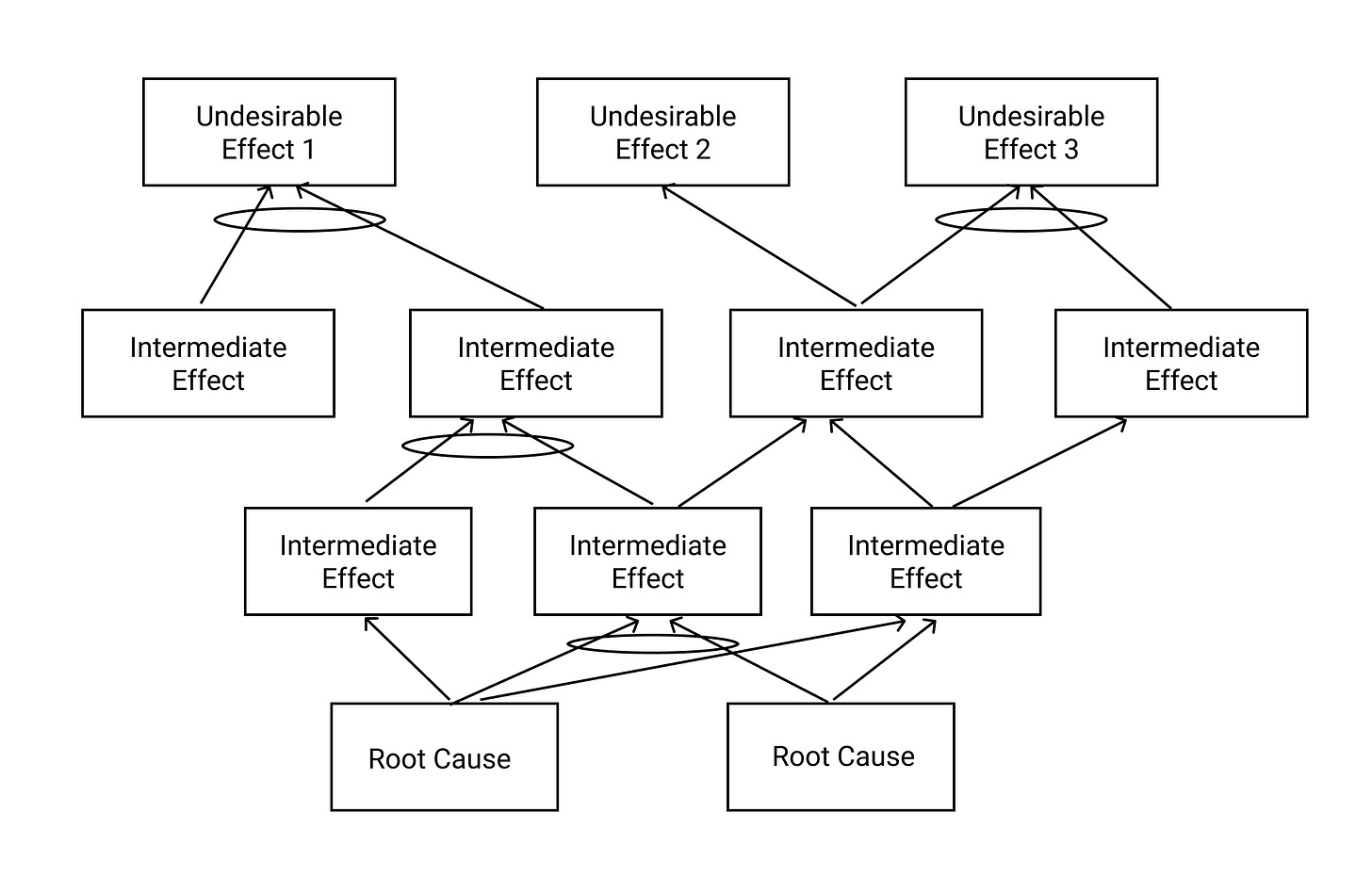#26 How to identify root causes using current reality tree? 🌳
Have you or your team felt that you are not making progress in spite of completing tasks and activities in a consistent and timely manner?
Some of the typical reasons why this happens:
You don't have a clear plan on how to reach your goals
You are working on low leverage activities that are not part of the plan
You are working on the same problems i.e. same problems resurface after a period of time
You are constantly in fire fighting mode
You are unable to identify and solve hidden system level problems
One way to address these problems is to use a Current Reality Tree (CRT) or a problem tree.
A current reality tree is a visual representation of three components - UnDesirable Effects (UDEs), intermediate effects, and root causes.

The CRT is constructed from top to bottom, i.e. starting from the UDEs and ending with the root causes. Starting with the UDE speeds up the analysis of what's wrong with the system.
An UDE is something that prevents a team/organization from reaching it's goal and/or critical success factors. (You must have a completed goal tree before you construct a CRT, see the post on goal trees). Ideally, the team should identify only as many UDEs as the number of critical success factors and the goal. For example, if a company has one goal and three success factors in it's goal tree, it should have 4 UDEs.
Once the UDEs are identified, you need to build a chain of cause and effects until you reach the root causes. The tree is built on sufficiency logic and there may be several intermediate effects and causes between the root cause and the UDE. Some of the most common errors that are made while building the tree - missing intermediate effects, not listing all the contributing causes of an effect (cause insufficiency), and listing something that is not present in reality (entity existence). While building the chain of cause and effect, it is important to write down the underlying assumptions. This is helpful as assumptions change over time and the same cause can result in a different effect.
How do you know that you have reached the root cause? If you have reached the lowest causes under your organizations sphere of influence, those are your root causes or critical root causes. In a well constructed tree, you will have only a few root causes.
Once the tree is constructed, it should be read from bottom to top, following the direction of arrows. An arrow going from box A to box B, should be read as - if A then B or A causes B.
Key benefits of defining a CRT are:
Isolation of causal factors that is preventing the organization from reaching it's goal
Helps the team to focus it's efforts on resolving on root causes (not symptoms()
Prioritize high leverage actions that will have the greatest positive impact on the system with the simplest of changes
A CRT that provides a clear and comprehensive plan for what to change ensures that employees are productive and feel that they are making progress everyday.
